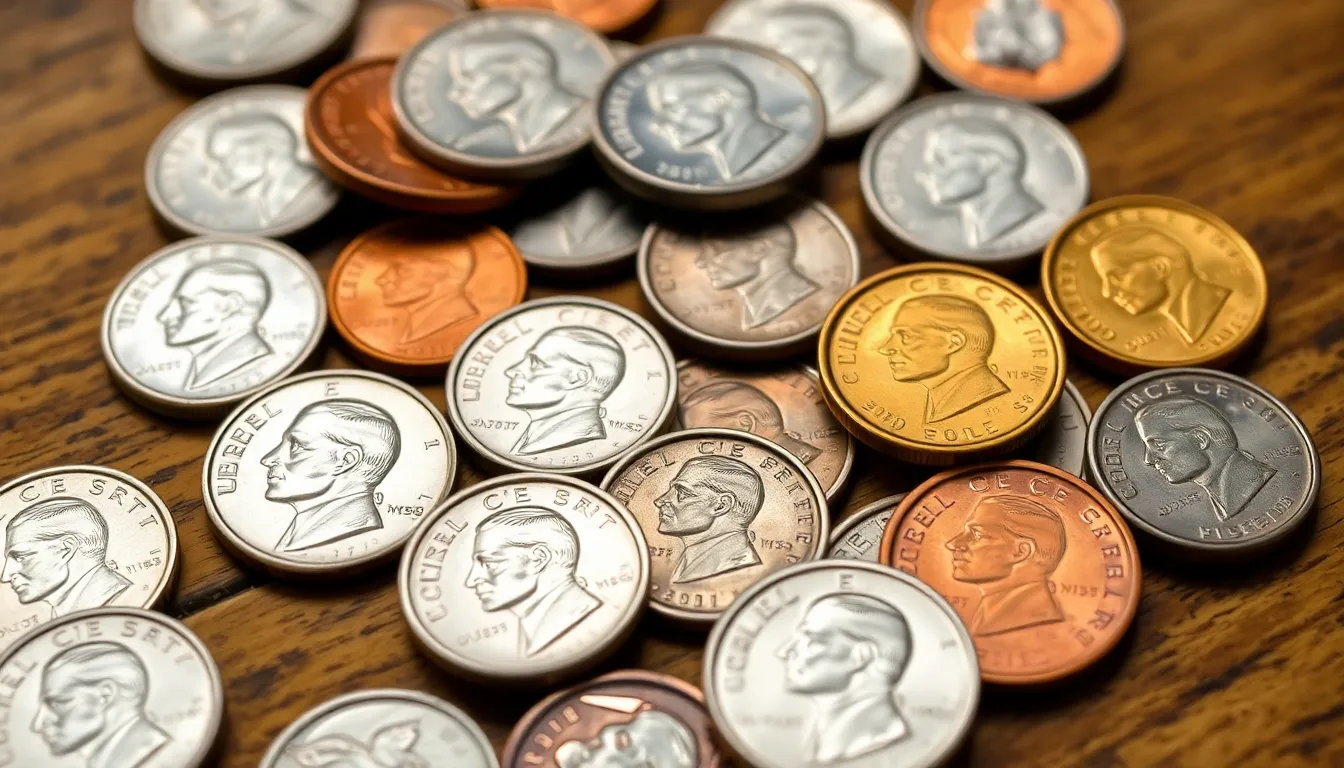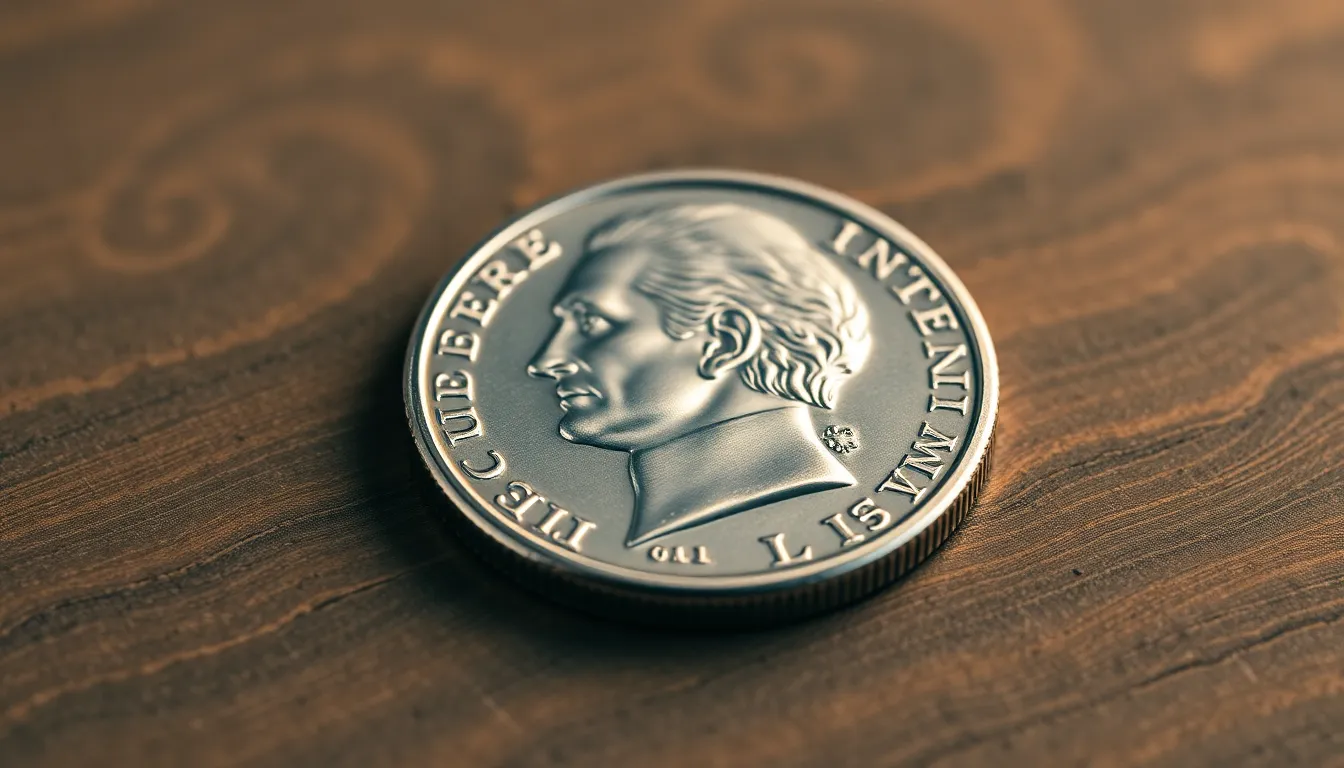Silver nickels, those shiny little treasures, once held a special place in the hearts of coin collectors and everyday spenders alike. Picture this: a time when pocket change was not only functional but also a glimmering reminder of wealth, even if it was just a few cents. But when did this beloved coinage fade into history?
Table of Contents
ToggleHistory Of Silver Nickels
Silver nickels hold a notable place in American coinage history. Their introduction came during World War II, addressing wartime nickel shortages that arose from the need for nickel in military equipment.
Origins And Introduction
The U.S. Mint introduced silver nickels in late 1942. This decision reflected both the economic conditions and the necessity for materials during the war. Crafted primarily for circulation, these coins contained 35 percent silver, making them valuable in terms of precious metal content. Initially known as “war nickels,” they replaced regular nickel coins, showcasing a distinct design with the Monticello building on the reverse side.
Silver Nickel Composition
Silver nickels feature a specific composition designed for their time. Each coin contains 35 percent silver and 56 percent copper, with manganese making up the remainder. This blend provided a sturdy coin while introducing silver into everyday transactions. The silver content elevated their worth during and after the war, attracting both collectors and those interested in the coin’s inherent value. Silver nickels remained in circulation until 1945, marking a significant period in U.S. coinage history.
Transition To Copper-Nickel


The transition from silver nickels to a copper-nickel composition marked a significant shift in U.S. coinage. Economic pressures during and after World War II influenced this change.
Economic Factors
Rising silver prices created financial strains on the Mint. By 1965, the cost of extracting silver exceeded the face value of the coins. Due to this, lawmakers decided to eliminate silver from circulating coinage. The switch to copper-nickel allowed for more economical coin production while maintaining utility. Demand for silver also decreased because of declining public interest in holding these coins as investments. Shifts in economic policies encouraged the use of more affordable materials for making coins.
Production Changes
In 1965, the U.S. Mint officially stopped producing silver nickels. It replaced them with coins composed of 75 percent copper and 25 percent nickel, enhancing durability. Production methods also evolved, leading to streamlined minting processes that increased efficiency. Minting copper-nickel coins required less labor and resources, improving overall output. The new composition allowed for coins that would withstand wear and tear in circulation. This change reflected broader trends in materials science and manufacturing expertise.
Key Dates In Silver Nickel Production
Silver nickels experienced a distinct timeline, from their introduction to their discontinuation. This section highlights crucial years in their production history.
The Final Year
The final year of silver nickel production was 1945. Minting ended for these war nickels in the fall of that year, marking a shift in U.S. currency. Demand for silver increased, pushing prices higher and prompting changes in legislation. The Coinage Act of 1965 eliminated silver from circulating coins entirely. As a result, the 1945 war nickels stand as the last of their kind in the American coinage system. Ending production concluded a significant chapter in the Mint’s history while maintaining the rarity of these coins.
Collectible Years
Collectibility distinguishes years of silver nickel production. The years 1942 through 1945 saw the issuance of these war nickels. Coins minted in 1943 and 1944 are particularly sought after by collectors due to their limited availability. The production of 1942 included both types, with some containing copper-nickel and others silver. In terms of rarity, 1943-P is highly prized, given its unique features. Collectors often value these years for their historical significance and distinctive designs, which resonate with enthusiasts of numismatics.
Current Status Of Silver Nickels
Silver nickels maintain a dedicated following among collectors. This interest stems from their historical significance and unique composition.
Collectors’ Market
The collectors’ market for silver nickels remains robust, driven by nostalgia and rarity. Coin enthusiasts often seek pieces minted from 1942 to 1945. Among these, the 1943 and 1944 issues attract particular attention due to their limited availability. Many collectors regard the 1943-P silver nickel as a highlight of their collections. Auctions frequently showcase these coins, reflecting their worth and desirability. Enthusiasts share insights through forums and online communities, discussing acquisition tips and restoration techniques. Opportunities to acquire well-preserved examples arise at coin shows, where buyers connect with sellers directly.
Value Assessment
Value assessments for silver nickels depend on several factors, including condition and rarity. Coins in uncirculated condition command higher prices, often reaching several hundred dollars. The 1943-P silver nickel, for instance, can fetch thousands based on its condition. Market fluctuations generally mirror silver prices, influencing demand and value. Collectors often consult grading services to determine coin quality accurately. Selling platforms like eBay and auction houses contribute to price visibility, presenting real-time assessments of market value. Authentication remains essential, with reputable sources verifying the coins’ legitimacy and historical context. Overall, the collectors’ market for silver nickels emphasizes both investment and appreciation of numismatic history.
The end of silver nickels marked a significant transition in U.S. currency. From their introduction during World War II to their discontinuation in 1945, these coins captured a unique moment in history. The shift to copper-nickel compositions reflected broader economic changes and the evolving needs of the Mint.
Today, silver nickels remain a cherished part of numismatic history. Collectors continue to seek out these coins for their rarity and historical significance. As the market for silver nickels thrives, enthusiasts celebrate the legacy of these distinctive coins, ensuring their place in the hearts of collectors for years to come.



